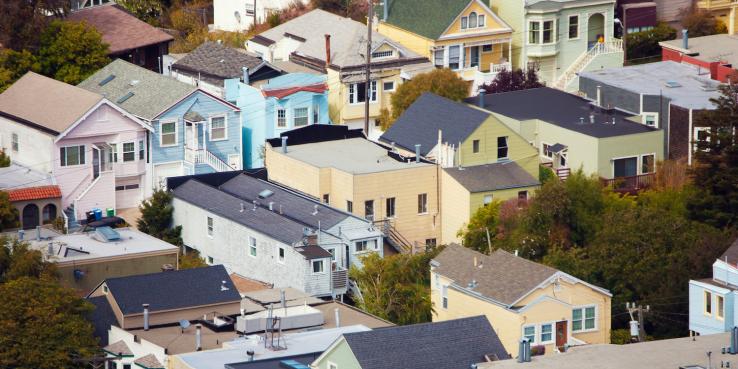Over a decade after he first sponsored in-law unit legislation, San Francisco Supervisor Aaron Peskin recently introduced an ordinance that would allow new accessory dwelling or “in law” housing units across San Francisco. Soon afterward, supervisors Mark Farrell and Scott Wiener introduced a proposal that’s similar in most respects but slightly less restrictive. We’re thrilled to see proposals to increase the city’s housing supply moving forward. In order for them to be effective, it’s going to be important to get the details right.
In many places, new housing on the site of an existing residence often takes the form of a freestanding cottage, but in San Francisco, in-law units are usually renovations of a former garage, storage space, basement or attic. They can be distributed throughout the city, and they double the density of a site with little neighborhood impact. SPUR has been a long-time cheerleader for in-law units. They’re cheaper to build out than a brand-new unit, and they’re a good way to provide lower rents without government subsidy. In-law units also meet the varying needs of households over time: They can provide independent housing for elderly or young-adult family members, they can house childcare or in-home health care workers, and they can provide rental income to families in times of death, divorce or illness.
While state law recognizes that in-law units are a key housing resource, local regulations often make them difficult to legalize or build. In addition to Supervisor Peskin’s 2002 legislation, earlier efforts to address the legality of San Francisco in-law units in the 1980s and 1990s failed to win over enough supervisors to pass.
More recently, thanks to changing attitudes and the leadership of Supervisors David Chiu, Scott Wiener and Julie Christensen, the Board of Supervisors passed legislation that addressed the permitting of existing illegal units and the creation of new units in Districts 3 and 8 and across the city when seismic retrofits are underway. Similar efforts around the Bay Area (Oakland, Berkeley, Marin) and around the country (Vancouver, Minneapolis, Portland and others) are also gaining traction. SPUR is participating in a Bay Area-wide campaign with the Bay Area Council, Greenbelt Alliance, Transform, the Center for Creative Land Recycling, the AARP and others to support local and state efforts like Senate Bill 1069 (Wieckowski) and Assembly Bill 2299 (Bloom) to make in-law units easier to create.
In many places, in-law units may not be downright illegal, but the laws that shape them are overly restrictive and very few get built. For either of the San Francisco proposals to have real impact, it will be important to make sure such unintended consequences don’t happen in San Francisco.
We’re largely pleased with the proposals and with city staff’s recommended changes. SPUR’s take is that a more flexible version of the ordinance is likely to be more effective at creating new housing opportunities in San Francisco. For example, we suggest removing the cap on the number of in-law units per building. Physical constraints and zoning and building code requirements will still keep the number of additional units within reason. We also agree with staff’s recommendation to allow the use of space where an owner is already allowed to build, which may include some space beyond the existing building structure. We suggest further that there should be future study of backyard cottages and other possible spaces that lie outside the existing structure.
Other parts of the proposals may unnecessarily limit the pool of eligible properties: We understand that the city has a history of withdrawing rights and privileges from buildings that have had no-fault evictions. The proposals suggest that in-law units could not be added in any buildings that had no-fault evictions in the prior 5 to 10 years. We agree with the Planning Department staff’s suggestion that these restrictions be put in place going forward, rather than retroactively, and we think that buildings that had temporary evictions where the original tenant was able to return should be allowed to add in-law units. We agree that the addition of an income-generating unit is a benefit for a property owner that should not be offered to bad actors, but the creation of a new unit also benefits San Francisco residents by increasing the amount of available housing.
If San Francisco is serious about getting large numbers of in-law units, the city should treat this as a learning process. Over time, we will find out whether or not the current and proposed regulations work to generate large numbers of new in-law units. In five years, the city should study whether it put the right set of incentives in place — and should be willing to change course based on what it learns.
